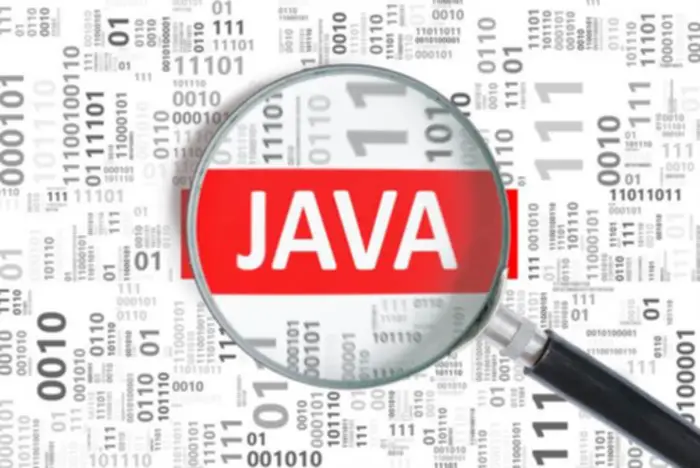- Your cart is empty
- Continue Shopping
What Is Cloud Native Architecture Benefits
Transform Your Business With AI Software Development Solutions https://www.globalcloudteam.com/ — be successful, be the first!
What Are The Vital Thing Areas To Secure In Cloud Native Environments?
This white paper supplies in-depth insights into our strong security measures, protocols, and greatest practices implemented within Digital Trust our cloud-native platform. It offers valuable information to help you understand how we prioritize the protection of your knowledge and ensure the highest stage of safety on your company’s operations. Cloud-native platforms like Optibus are built to scale seamlessly and can deal with growing workloads by dynamically allocating sources primarily based on demand. This means that as your transportation agency grows, the platform can easily adapt to handle greater volumes of data and consumer interactions. As your business grows, you must have the flexibility to scale your cloud assets and pivot your cloud technique on the pace of your industry—all with more efficiency and less cloud waste.

Case Examine: Leveraging Quarkus, Kogito, And More For A Cloud-native Resolution
- It helps optimize infrastructure, enhance application performance, and modernize the cloud environment, lowering the risk of vendor lock-in and avoiding high costs.
- With IaC, configurations for servers, networks, and storage are outlined and versioned, just like the practices applied to utility code.
- Building software program within the cloud allows stakeholders to access the event setting from anyplace.
- Despite its inherent limitations, its modular structure provides extra speed and flexibility that traditional systems can not match.
- Configuration management is the process of maintaining and managing the configuration of a system.
Beyond typical growth and operations actions, DevOps teams get more and more concerned in safety, compliance, and coordination with IT operations. Effective communication with ITOps and/or SecOps, as well as aligning goals with infrastructure and security groups, can create a unified and secure improvement pipeline. The price range is at all times an element when growing new products and advertising them. Most firms spend a big soa vs microservices portion of their price range on IT infrastructure, at the same time as no less than 30% of the information middle capacity stays unused. Investing more funds in the identical infrastructure will also influence the bottom line, and never favorably. Cloud native computing helps channel funds away from costly ecosystems to new roll-outs.
Real-world Benefits Of Cloud-native Architecture

Consequently, lengthy development cycles occurred incessantly, prices rose and flexibility was restricted. This drove builders to hunt new, progressive methods to build and handle functions at scale. It’s a set of practices and technologies – all to get the most out of the cloud. Finally, it’s essential to continuously monitor and optimize your cloud infrastructure to ensure that it delivers the anticipated benefits. This includes monitoring performance, identifying and addressing issues, and optimizing resource utilization to reduce costs.
Product-oriented Operating Model
Cloud-native applications use load balancers to evenly distribute site visitors across parts of the applying. They are also constructed with self-healing mechanisms that detect issues, provision replacements, and guarantee high and continuous availability. Today’s customer demographic is international and has all generations, from Boomers to Gen Z. Their expectations also continue to alter quickly with customer support and expertise at the top. Companies that experience downtime incessantly will lose their customers quick, and people who keep customer-focused will retain prospects for life. Cloud native technologies ensure continuous delivery with shorter cycles and frequent updates.
You partner with consultants in delivery who’re all the time up to date with the latest technology and best practices. They present supply providers at any scale and demand you require, whilst you can concentrate on producing your product. This strategy provides the highest stage of flexibility, scalability, and entry to cutting-edge expertise within the delivery house. You can shortly adapt to adjustments, scale your operations effortlessly, and profit from steady enhancements in delivery effectivity.

Cloud native systems also support automating processes such as rollback, recovery, canary deployment, and monitoring. Stateless processing is a core concept in cloud native purposes, enabling high scalability with inherent fault tolerance. One layer includes the variable variety of transaction elements that don’t retain long-term state info, whereas the opposite layer accommodates a scalable storage system.
They work independently, however they are linked together to keep the system up and operating. Never build one thing for the cloud that doesn’t include these smaller items. Use diagrams and charts to assist your staff perceive what the construct will seem like when full. If a system you architected isn’t serving your company, you presumably can scrap it and begin once more. While utilizing managed providers from cloud providers can accelerate the adoption of cloud-native architecture, it can additionally result in vendor lock-in. However, organizations embarking on this journey may encounter several challenges that should be carefully managed to make sure a profitable transition.
They can routinely scale to handle various masses, recover rapidly from failures, and optimise resource use. Cloud-native structure leverages the total energy of cloud computing by designing purposes particularly to run in cloud environments. Unlike traditional purposes that might be “lifted and shifted” to the cloud, cloud-native functions are modular, containerized, and built to scale seamlessly.
They engaged a software vendor to assist them make the improvements and integrated CI/CD into their new Kubernetes-powered platform on AWS, leveraging their CircleCI pipeline and GitHub. The transition took lower than three months and enabled the FinTech firm to keep away from vendor lock-in. Cloud-native functions support auto-provisioning, so they routinely allocate and scale assets in response to shifting workloads and demand. This functionality helps functions run easily and continuously with out the necessity for guide intervention.
Customers demand software solutions that shortly resolve their issues within the fast-paced world. Consequently, companies look for agile and resilient methods to build quick functions, and that is where cloud-native solutions play a big role in building transformative functions. Managing a broad vary of instruments for container orchestration, monitoring, and deployment results in integration issues and extra cognitive load. DevOps teams might struggle to establish standardized methods throughout the development lifecycle, resulting in inefficiencies, longer studying curves, and potential errors. Using a product-oriented operating model integrates digital initiatives with business goals, boosting collaboration and responsiveness. This change improves workflow effectivity and adaptation to dynamic cloud environments.
Application development positions itself toward assembly and integration, fueling the emergence of low-code application platforms (LCAPs) and citizen development. However, UST’s latest report also indicates that 95% of IT and business decision-makers encountered challenges in their cloud-native expertise adoption in 2023. “Shifting left” refers again to the follow of integrating security measures early within the improvement process, rather than ready till the top.
By equipping them with the mandatory tools and training, you’ll find a way to make sure that they’re able to identifying and mitigating safety risks. This not only enhances the safety of your applications but additionally reduces the burden in your safety staff, permitting them to give attention to more complex threats. Finally, the ideas of zero trust and least privilege are fundamental to cloud native safety. Zero belief is the thought that no person, system, or service ought to be mechanically trusted, regardless of their location or relationship with the organization. Instead, every access request ought to be verified and validated before access is granted. By enforcing immutability, groups can be sure that their functions remain consistent and stable, decreasing the likelihood of errors and security vulnerabilities.
By doing so, developers can detect and fix vulnerabilities as they come up, somewhat than discovering them after the appliance is deployed. Misconfigurations in Kubernetes can lead to important security risks, together with unauthorized access to the Kubernetes API server, and the underlying nodes. Securing Kubernetes entails a quantity of features like Role-Based Access Control (RBAC), secure API access, pod security insurance policies, and network segmentation inside the cluster. Specialized Kubernetes security tools can supply automated checks and remediations to enforce greatest practices within the Kubernetes setting.